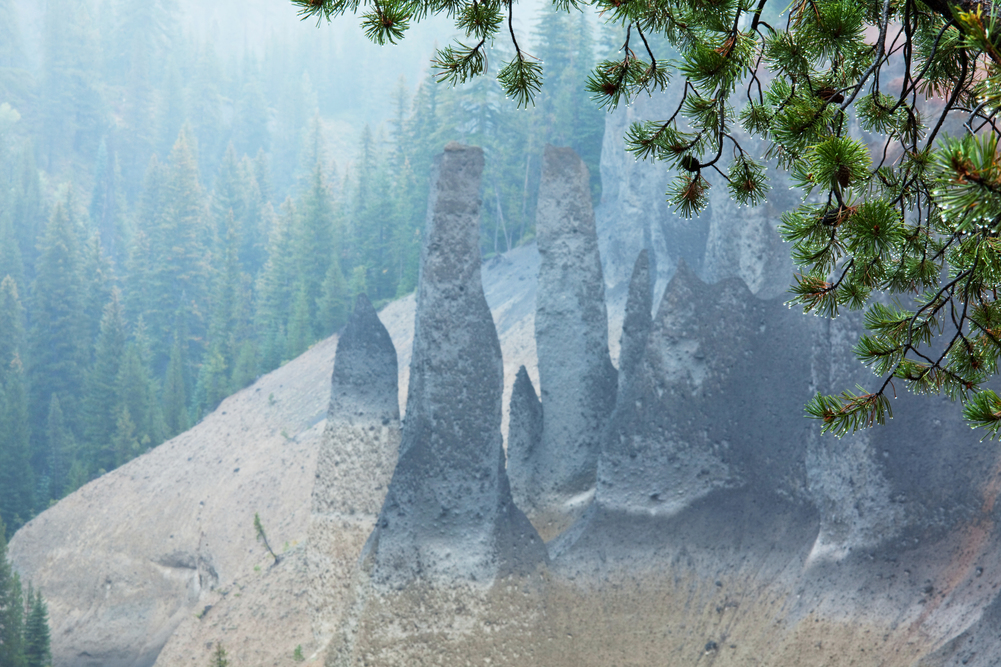From the early 20th century up through the 1980’s, geologists generally agreed that conditions during the early days of earth, especially during the Hadean period were utterly hostile to life. But new discoveries from scientists at Vanderbilt lean toward a more mild, stable environment in the early days of earth — one that is remarkably similar to today’s.
The study was conducted by a team of geologists directed by Calvin Miller, the William R. Kenan Jr. Professor of Earth and Environmental Sciences at Vanderbilt University, and published online this weekend by the journal Earth and Planetary Science Letters in a paper titled, “Iceland is not a magmatic analog for the Hadean: Evidence from the zircon record.”
In the past, an inability to find rock formations from the period led geologists to conclude that early Earth was hellishly hot. They pictured the surface of the Earth as covered by a giant “magma ocean,” either entirely molten or so unstable due to constant asteroid bombardment that any rocks that formed were rapidly remelted.
Theories on early earth began to shift about 30 years ago when geologists discovered zircon crystals. The crystals, made from a mineral typically associated with granite, were preserved in younger sandstones. All had ages exceeding 4 billion years. The presence of the zircons opened the door for exploration of the Earth’s earliest crust, according to the study from Vanderbilt.:
In addition to the radiometric dating techniques that revealed the ages of these ancient zircons, geologists used other analytical techniques to extract information about the environment in which the crystals formed, including the temperature and whether water was present.
Since then zircon studies have revealed that the Hadean Earth was not the uniformly hellish place previously imagined, but during some periods possessed an established crust cool enough so that surface water could form – possibly on the scale of oceans.
So what was early earth really like? There are two theories right now.
One argues that Hadean Earth was surprisingly similar to the present day.
The other argues that, although it was less desolate and hostile than previously believed, early Earth was still a hostile, unstable environment — similar to the hottest, most extreme, geologic environments of today. These scientists believes the best modern comparison is Iceland, where substantial amounts of crust are forming from basaltic magma that is much hotter than the magmas that built most of Earth’s current continental crust.
“We reasoned that the only concrete evidence for what the Hadean was like came from the only known survivors: zircon crystals – and yet no one had investigated Icelandic zircon to compare their telltale compositions to those that are more than 4 billion years old, or with zircon from other modern environments,” said Miller.
In 2009, Vanderbilt doctoral student Tamara Carley began collecting samples from volcanoes and sands derived from erosion of Icelandic volcanoes. She separated thousands of zircon crystals from the samples, which cover the island’s regional diversity and represent its 18 million year history.
“We discovered that Icelandic zircons are quite distinctive from crystals formed in other locations on modern Earth. We also found that they formed in magmas that are remarkably different from those in which the Hadean zircons grew,” said Carley about the research.
Their analysis found that Icelandic zircons grew from much hotter magmas than Hadean zircons.
Our conclusion is counterintuitive,” said Miller. “Hadean zircons grew from magmas rather similar to those formed in modern subduction zones, but apparently even ‘cooler’ and ‘wetter’ than those being produced today.
Earth gets to save her mysteries for another day, as scientists continue to explore.
[Image Credit: Tamara Carley / Vanderbilt ]

What an interesting article. I think it’s remarkable that Earth’s rocks and minerals can tell so many different stories. Someday, Scientists are going to figure out just what Earth was like in the early days and I bet we are all going to be surprised as to what our planet used to be like. Maybe it really hasn’t changed that much over time.
So Earth was not as ‘Hellish’ as some scientists previously thought. Why does it matter? All this means is that as science advances, it contradicts it’s own previous discoveries, and establish that whatever you and me learned in school was rubbish!
It mattters as much as many many other bits of information. It means that there are people doing something and contributing to the human knowledge base.
It does seem that the more science advances, the more contradictions we have, but that doesn’t mean we should stop seeking knowledge. To discover that the environment on Earth wasn’t as bad as originally thought isn’t hurting anyone, so why not enjoy the discovery?
This is fascinating. We will always be amazed by all the secrets Earth holds. The only thing we can know for sure is that scientist will never stop making discoveries about our beautiful planet. I wonder what the future holds for this planet.